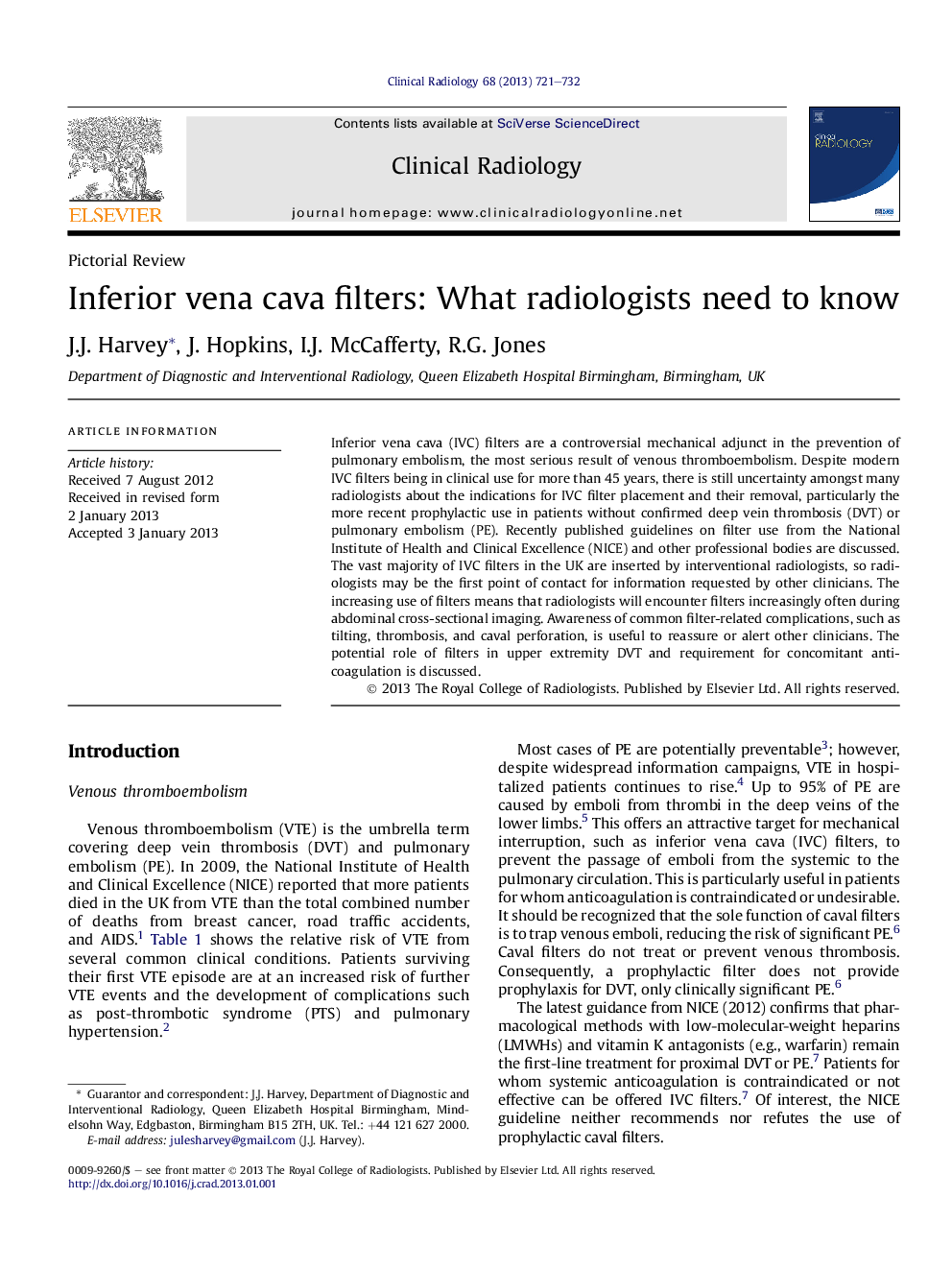| Article ID | Journal | Published Year | Pages | File Type |
|---|---|---|---|---|
| 3982492 | Clinical Radiology | 2013 | 12 Pages |
Inferior vena cava (IVC) filters are a controversial mechanical adjunct in the prevention of pulmonary embolism, the most serious result of venous thromboembolism. Despite modern IVC filters being in clinical use for more than 45 years, there is still uncertainty amongst many radiologists about the indications for IVC filter placement and their removal, particularly the more recent prophylactic use in patients without confirmed deep vein thrombosis (DVT) or pulmonary embolism (PE). Recently published guidelines on filter use from the National Institute of Health and Clinical Excellence (NICE) and other professional bodies are discussed. The vast majority of IVC filters in the UK are inserted by interventional radiologists, so radiologists may be the first point of contact for information requested by other clinicians. The increasing use of filters means that radiologists will encounter filters increasingly often during abdominal cross-sectional imaging. Awareness of common filter-related complications, such as tilting, thrombosis, and caval perforation, is useful to reassure or alert other clinicians. The potential role of filters in upper extremity DVT and requirement for concomitant anticoagulation is discussed.
